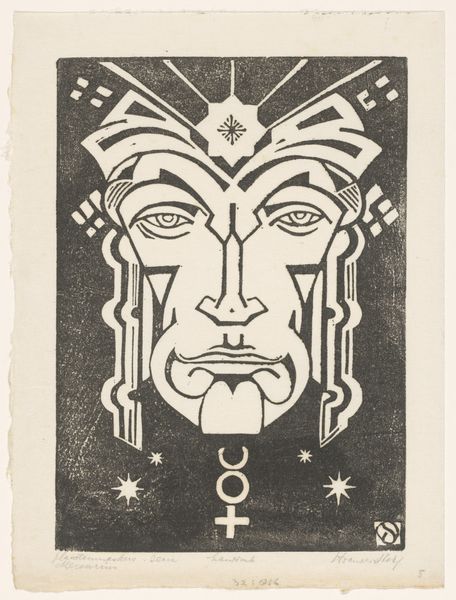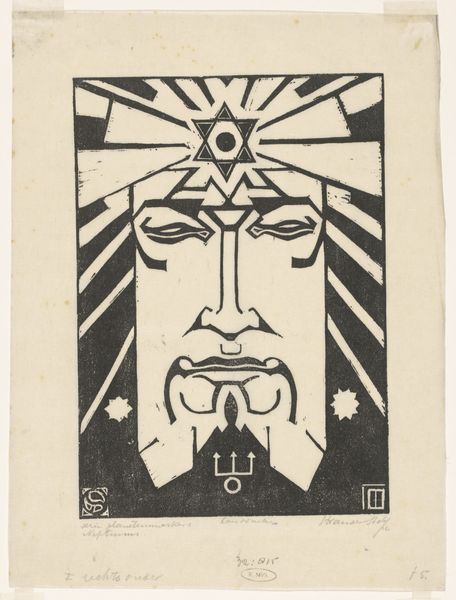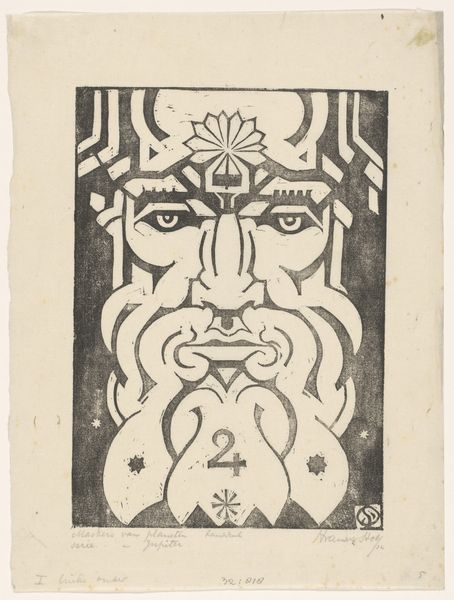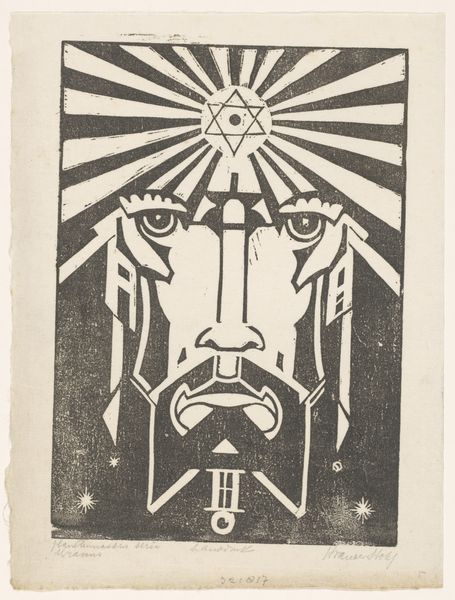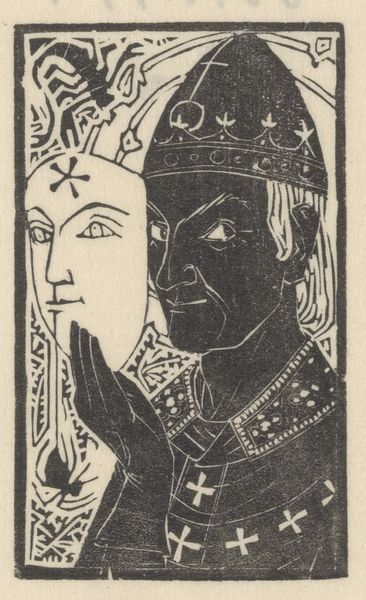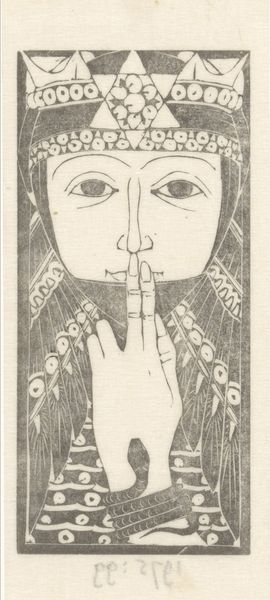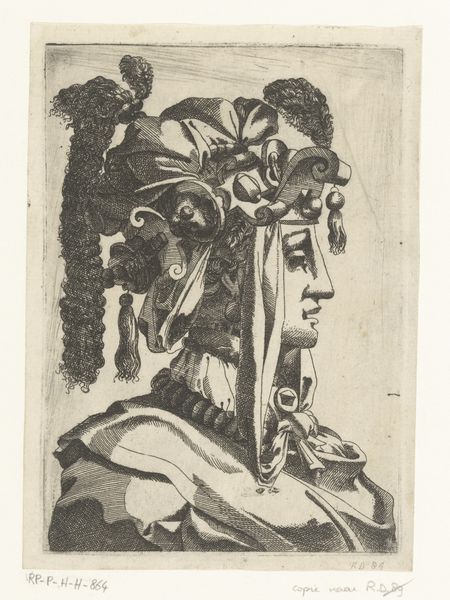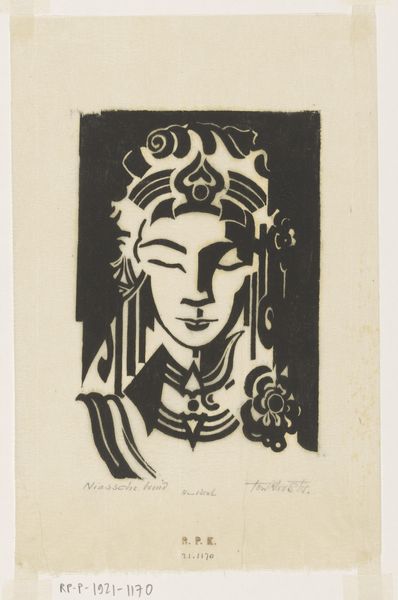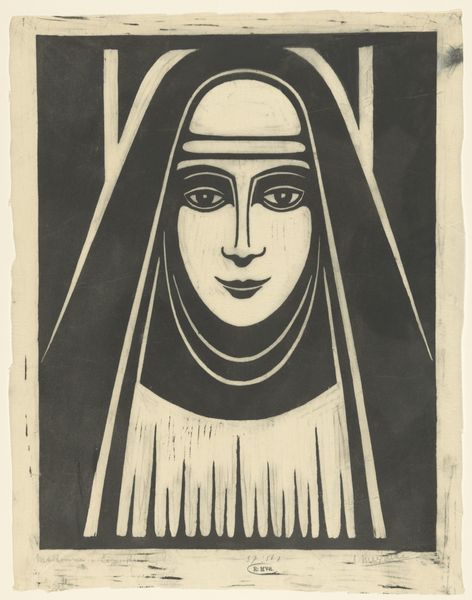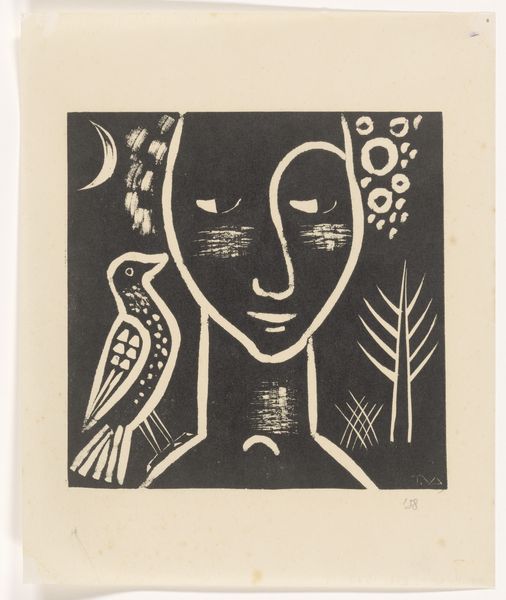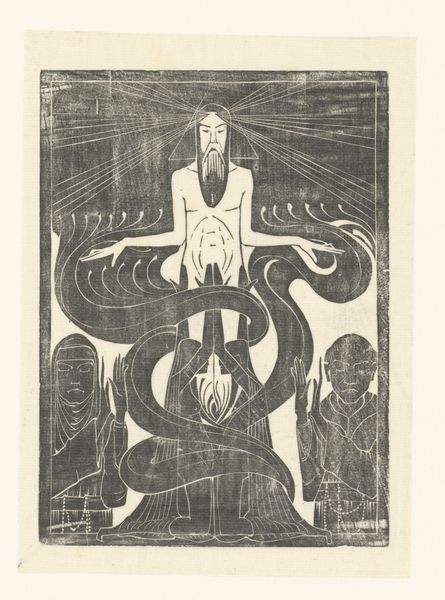
print, intaglio, woodcut
#
portrait
# print
#
intaglio
#
caricature
#
figuration
#
geometric
#
expressionism
#
woodcut
#
line
#
symbolism
Dimensions: height 330 mm, width 248 mm
Copyright: Rijks Museum: Open Domain
Editor: We're looking at "Venus," a woodcut print by Henri van der Stok, created sometime between 1880 and 1932 and held at the Rijksmuseum. It’s a striking, stylized portrait. I’m immediately drawn to the bold use of black and white and how geometric shapes are incorporated throughout. How do you read this piece, particularly its formal composition? Curator: The formal elements are indeed paramount here. Note how van der Stok has meticulously arranged a constellation of shapes to construct the visage of Venus. The graphic quality, almost a crude yet refined linearity, demands we consider the very essence of representation. What semiotic language is deployed to communicate 'Venus' to us? Editor: The stylized features—the rigid headdress that looks like both a crown and antenna, the Venus symbol at the base—create an intriguing sense of iconic power, even…alienation, perhaps? It feels so different from traditional, soft depictions. Curator: Precisely. This distortion or rather, _re_-formation serves a specific function. We must attend to the relationship between positive and negative space. How does the stark contrast manipulate our gaze, guiding us through a calculated visual pathway? The rigidity speaks not of idealized beauty, but a constructed representation of it. Is 'beauty' then merely a configuration, a series of deliberate formal choices? Editor: So you are suggesting that it invites us to dissect beauty, to view it as pure design? The expressionistic leaning adds a certain intensity, don't you think? Curator: Absolutely. Expressionism amplifies the impact. But within this starkness, we cannot ignore how lines become both structural and ornamental. Van der Stok seems concerned with the very syntax of visual form. The subject takes a definite second seat to form. What a fabulous reduction! Editor: It’s given me a totally new perspective on what a portrait—and a depiction of beauty—can be! Focusing on those visual and structural relationships rather than the conventional interpretation is incredibly helpful.
Comments
No comments
Be the first to comment and join the conversation on the ultimate creative platform.
